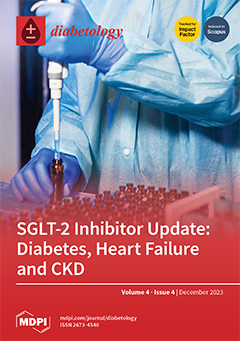Background and Objectives: Prediabetes is associated with a high risk of developing diabetes and cardiovascular disease. Early treatment with exercise and dietary interventions can reduce the progression of prediabetes to diabetes or even lead to a return of glucose levels to normal. The aim of the study was to evaluate the effect of a dietary supplement with
Portulaca oleracea and titrated
Cistus creticus extract on the glycemic profile of people with prediabetes. Materials and Methods: Participants were assigned to a dietary supplement with
Portulaca oleracea and titrated
Cistus creticus extract, along with vitamins and minerals, received once daily for 90 days. Demographics and medical history were obtained, and a complete clinical examination, measurement of somatometric characteristics, and laboratory parameters were performed at baseline. The measurement of somatometric characteristics and laboratory tests were repeated at the end of the study. Results: A total of 26 people with prediabetes participated, 11 females and 15 males. There was a tendency for a decrease in HbA1c after intervention [baseline: 5.9 (5.7–6.1)%; at the end of the study: 5.7 (5.7–6.0)%,
p = 0.062] and a significant decrease in fasting glucose levels (from 110.8 ± 7.0 mg/dL to 103.9 ± 10.3,
p = 0.005). Fasting insulin and homeostasis model assessment of insulin resistance (HOMA-IR) decreased significantly [baseline fasting insulin: 20.7 (9.3–34.20) μU/mL; at the end of the study: 15.1 (8.6–19.0) μU/mL,
p = 0.028; baseline HOMA-IR: 3.6 (2.5–8.9); at the end of the study: 3.5 (2.0–4.6),
p = 0.035]. Significant reductions were observed in alkaline phosphatase and uric acid levels. No significant change was observed in body weight, body mass index, or waist circumference after the intervention. No treatment-emergent adverse events were observed, and all participants completed the study. Conclusions: The dietary supplement from
Portulaca oleracea and titrated
Cistus creticus extract, along with vitamins and minerals, may improve the metabolic profile of people with prediabetes.
Full article





